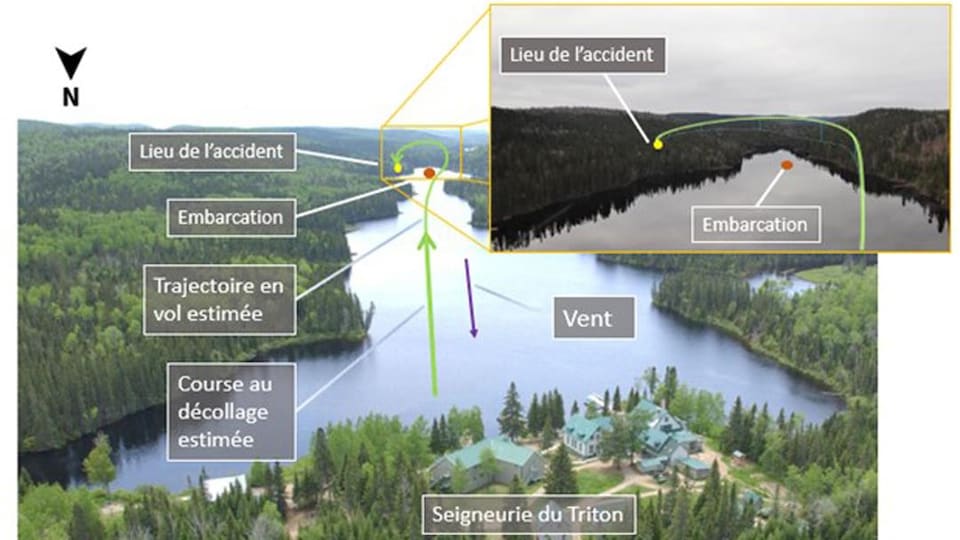A crowded turn at low altitude likely caused a seaplane to crash near La Seigneurie du Triton outfitter, in Haute-Mauricie, in September 2021. This emerged in the Transportation Safety Board (TSB) investigation report. ) of Canada.
On the morning of September 12, 2021, shortly before 10 am, the Piper J3C-65 seaplane in which a pilot and a passenger were sitting departed from the outfitter in the direction of Saint-Étienne-des-Grès. The purpose of the flight is for the passenger to be able to take pictures while flying over the chalets.
Shortly after the flight, the seaplane swerved to avoid flying into a boat. Moments later, the speed and altitude of the aircraft dropped as the pilot started to the left.
The pilot lost control of the seaplane, which suffered an aerodynamic stall that led to an in-spin autorotation and hit trees and then the ground.. The aircraft was destroyed by the force of the impact, killing the passenger and seriously injuring the pilot.
The latter has accumulated 1,300 flight hours, half of it on seaplanes, and has the license and qualifications necessary to perform this flight, according to the TSB. The pilot had been to this outfitter once, but he had not yet flown in a southerly direction from this location on the Batiscan River.
The seaplane has had nearly 4000 flight hours since it was made and there were no known abnormalities prior to the flight path.
Changing conditions
Strong winds were blowing high during the flight, according to information collected by the federal agency, as they strong slowed by trees and the relief, especially at ground level.
In flight, the aircraft was flying low over the river at about 65 feet when the left turn was initiated below the wind of the hills west of the river. The aircraft thus found itself above the trees east of the river. Thus, it is possible that some of these near-surface wind factors were present and contributed to the reduction in aircraft speed and therefore performance.
At the time of the turn, the headwinds turned into tailwinds, another element identified by investigators to explain the aircraft’s loss of control.
The TSB recommends that pilots avoid steep turns at low altitude, but if they do, many factors must be considered to avoid losing control.
Source: Radio-Canada
